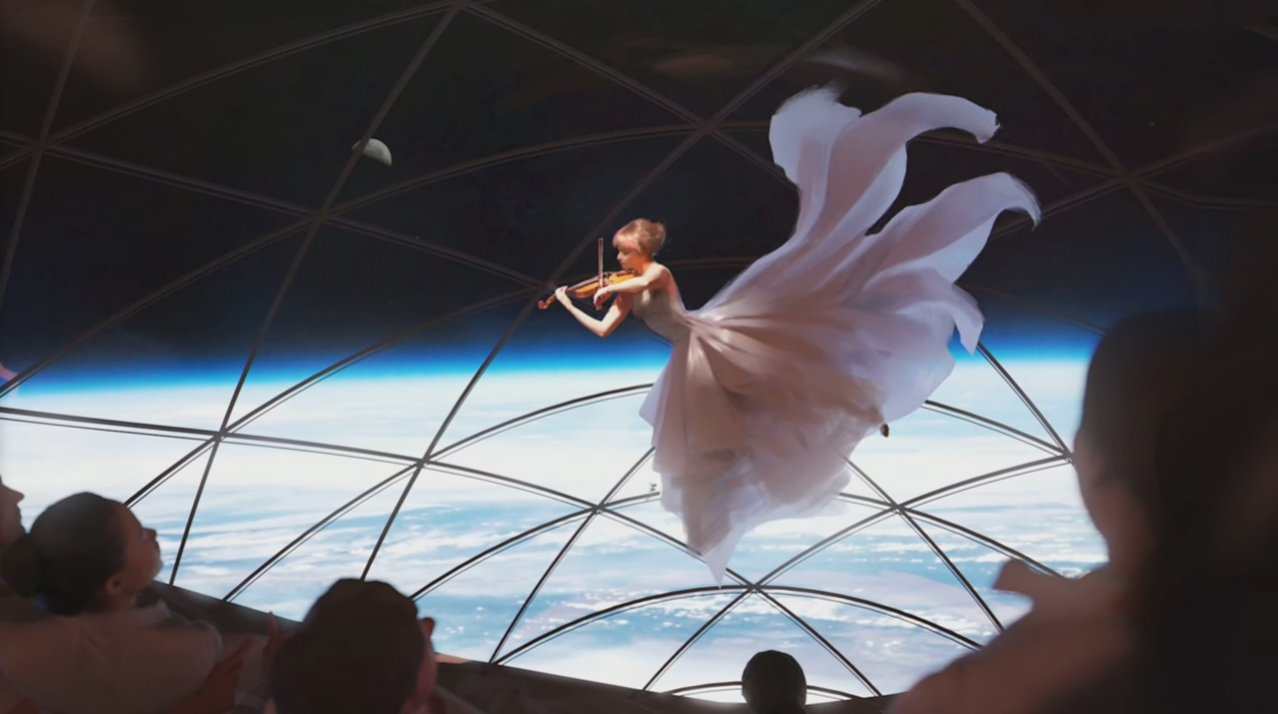SpaceX Will Livestream Moon Tourist Flight in HD Virtual Reality, Elon Musk Says
Only a lucky handful of artists and a Japanese billionaire will take a trip on a rocketship to the moon with SpaceX. But the moonshot won't just be televised; you'll get to experience it from Earth in virtual reality.
That's the message from SpaceX CEO Elon Musk on the upcoming private moon flight of entrepreneur Yusaku Maezawa, which Musk unveiled to the world Monday (Sept. 17). Maezawa will launch on a trip around the moon on SpaceX's new Big Falcon Rocket (BFR), and he plans to take between six and eight artists along for the ride. The flight, called the Lunar BFR Mission, could launch as early as 2023, and we'll all be able to watch it live and in VR, Musk said.
"Moon mission will be livestreamed in high def VR," Musk announced on Twitter Tuesday (Sept. 18), "so it'll feel like you're there in real-time minus a few seconds for speed of light." That speed-of-light reference is apparently a nod to the ever-so-slight time lag for a signal to cross the 238,000 miles (383,000 kilometers) between Earth and the moon. [How SpaceX's Passenger Moon Flight Will Work]

There might even be entertainment. "Perhaps one of the invited artists choosing to play. There will be no obligation to do so," Musk said after posting an artist's illustration of a violinist performing on a potential mission, her gown flowing in weightlessness behind her.
When asked how SpaceX could accomplish the Herculean feat of providing a high-definition VR broadcast in real time, Musk said the company's new Starlink communications satellites could handle the load.
"Yeah, Starlink should be active by then," he wrote. SpaceX is developing a constellation of more than 4,000 Starlink communications satellites to provide broadband internet access around the Earth. The first two prototype Starlink satellites launched earlier this year.
The Lunar BFR Mission will send Maezawa and his artist guests on a loop around the moon using SpaceX's BFR booster and its crewed spacecraft, the Big Falcon Spaceship (BFS). The BFR-BFS launch system will be the largest rocket in the world once it's assembled, standing a whopping 387 feet (118 meters) tall. It is designed to be fully reusable and be able to launch up to 100 people and 110 metric tons (100 metric tons) of cargo into space.
Get the Space.com Newsletter
Breaking space news, the latest updates on rocket launches, skywatching events and more!
SpaceX has tapped the BFR-BFS launch system as the centerpiece for the company's Mars colony plan, an ambitious goal to send explorers to Mars and build a new home on the Red Planet. The crewed spaceship, Musk has said, will be able to land on Mars, the moon and any other planetary body, and could also fly point-to-point trips on Earth.
The BFR booster will separate from its crewed spacecraft and return to Earth much like SpaceX's Falcon 9 and Falcon Heavy first-stage boosters do today.
One Twitter fan asked Musk if SpaceX would ever consider a contest or raffle to allow members of the general public, not just the ultrarich, to go on a trip to the moon.
"Long-term, there will be thousands and eventually, hopefully, millions of missions & anyone will be able to go," Musk wrote on Twitter.
And those flights might just come with some welcome comforts from Earth. One Twitter user suggested the BFS could use a bar.
Musk, it seems, concurs.
"Space bar," he replied.
Email Tariq Malik at tmalik@space.com or follow him @tariqjmalik. Follow us @Spacedotcom, Facebook and Google+. Original article on Space.com.
Join our Space Forums to keep talking space on the latest missions, night sky and more! And if you have a news tip, correction or comment, let us know at: community@space.com.

Tariq is the Editor-in-Chief of Space.com and joined the team in 2001, first as an intern and staff writer, and later as an editor. He covers human spaceflight, exploration and space science, as well as skywatching and entertainment. He became Space.com's Managing Editor in 2009 and Editor-in-Chief in 2019. Before joining Space.com, Tariq was a staff reporter for The Los Angeles Times covering education and city beats in La Habra, Fullerton and Huntington Beach. In October 2022, Tariq received the Harry Kolcum Award for excellence in space reporting from the National Space Club Florida Committee. He is also an Eagle Scout (yes, he has the Space Exploration merit badge) and went to Space Camp four times as a kid and a fifth time as an adult. He has journalism degrees from the University of Southern California and New York University. You can find Tariq at Space.com and as the co-host to the This Week In Space podcast with space historian Rod Pyle on the TWiT network. To see his latest project, you can follow Tariq on Twitter @tariqjmalik.









